Building Blocks, Origin Stories, and Growing Pains
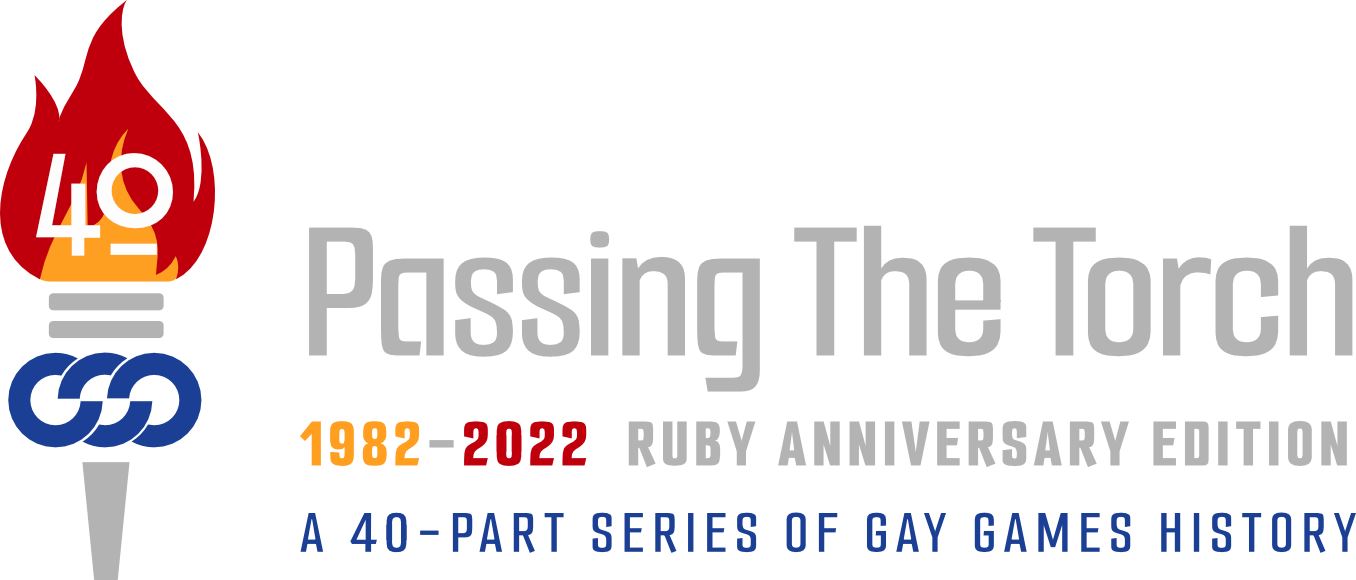
Produced and curated by Federation of Gay Games Archivist Doug Litwin and FGG Honourary Life Member Shamey Cramer
with Ankush Gupta, FGG Officer of Communications.
Read the entire "Passing The Torch" series as it is posted daily HERE.
Post 7 of 40 - 3 August - Building Blocks, Origin Stories, and Growing Pains
“Passing The Torch: Ruby Anniversary Edition” is a factual timeline of the major events that have been part of the Gay Games evolution since its inception. The series will run from 28 July 2022 - one month before the 40th anniversary of the original Opening Ceremony at San Francisco’s Kezar Stadium - through 05 September, the anniversary of Gay Games I Closing Ceremony. All postings will remain online and available for viewing at the FGG website.
* * *
Following Gay Games II, more of the teams in the various sport disciplines began to create their own networks as more and more sports teams took the courage to be out and proud. It was also a time to transition from having the original host organization produce the event, to figuring out a way to select the next host city through an open bid process. But in order to do so, an international governing body would need to be created to steward the quadrennial event.
* * *
.jpg)
BRENT NICHOLSON EARLE: I was not in on the ground floor of the Gay Games movement. In 1985, I decided to run around the entire US to bring attention to the AIDS crisis, a project that became the American Run for the End of AIDS. I had no track record as a marathon runner and needed some prominent people in the LGBT movement and AIDS organizations behind me. I reached out to GMHC (Gay Men’s Health Crisis) but they were too busy trying to keep people alive. Everywhere I tried, I came up dry.
I asked other runners how I could possibly train for a 9,000 mile plus run. The advice I got was to train to run marathons and just keep doing them. That year I did five marathons, one of which was the San Francisco marathon. I had a 30-day Greyhound bus pass, which got me to the west coast. I knew I needed Tom Waddell’s endorsement but hadn’t met him yet.
Tom agreed to meet at his office at San Francisco General Hospital. I had prepared a packet of information but he didn’t look at anything. He didn’t even question me. He just said, “This is fantastic!” and invited me to a kickoff party for Gay Games II in his home that weekend. That afternoon I met a lot of the people who would become beloved friends and colleagues on the Federation of Gay Games.
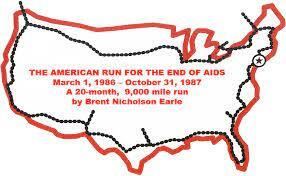
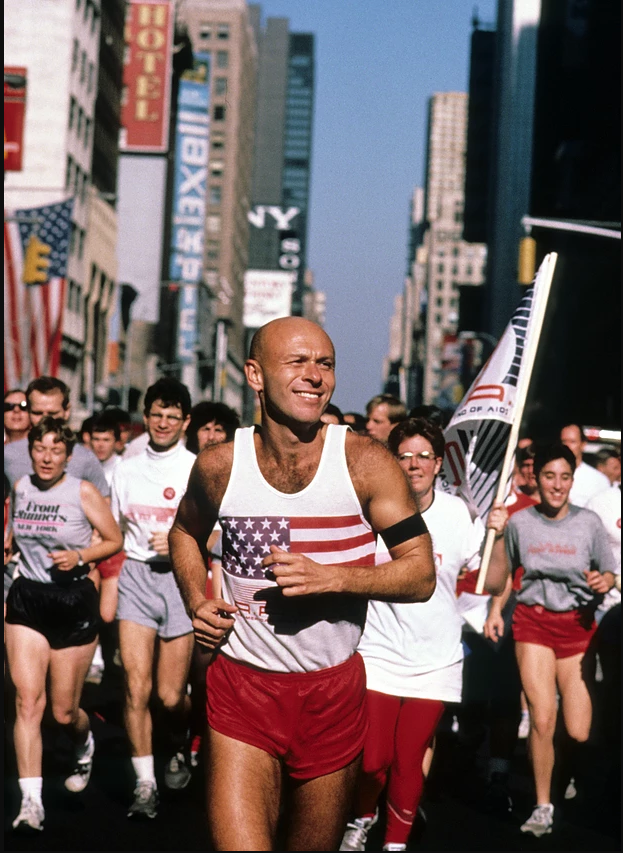
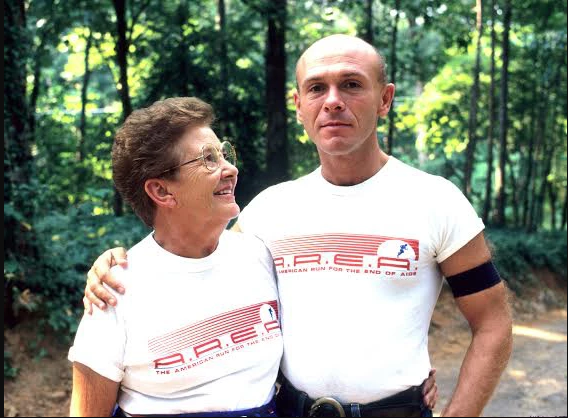
Brent Nicholson Earle and the American Run for the end of AIDS
The American Run for the End of AIDS went from March 1,1986 to October 31,1987 with Gay Games II in the middle of August 1986. I took a detour out of Billings, Montana to run the marathon in the Gay Games in San Francisco.
Tom had been very sick. He came down with pneumocystis right before the Opening Ceremony and got out of the hospital just in time to throw the javelin and win the gold medal. He was still really shaky as he spoke at Closing Ceremony and urged everyone to come out.
* * *
* * *
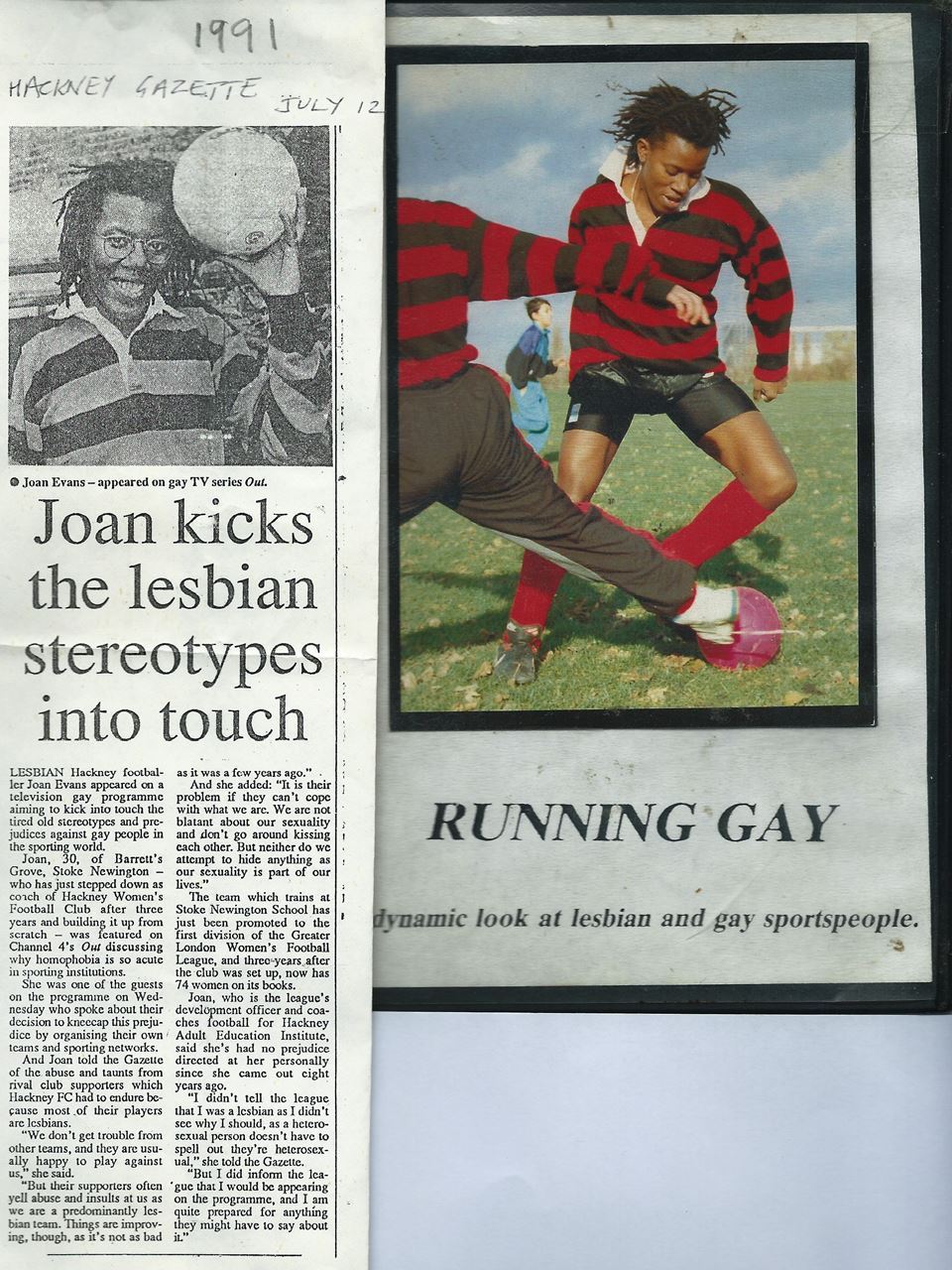
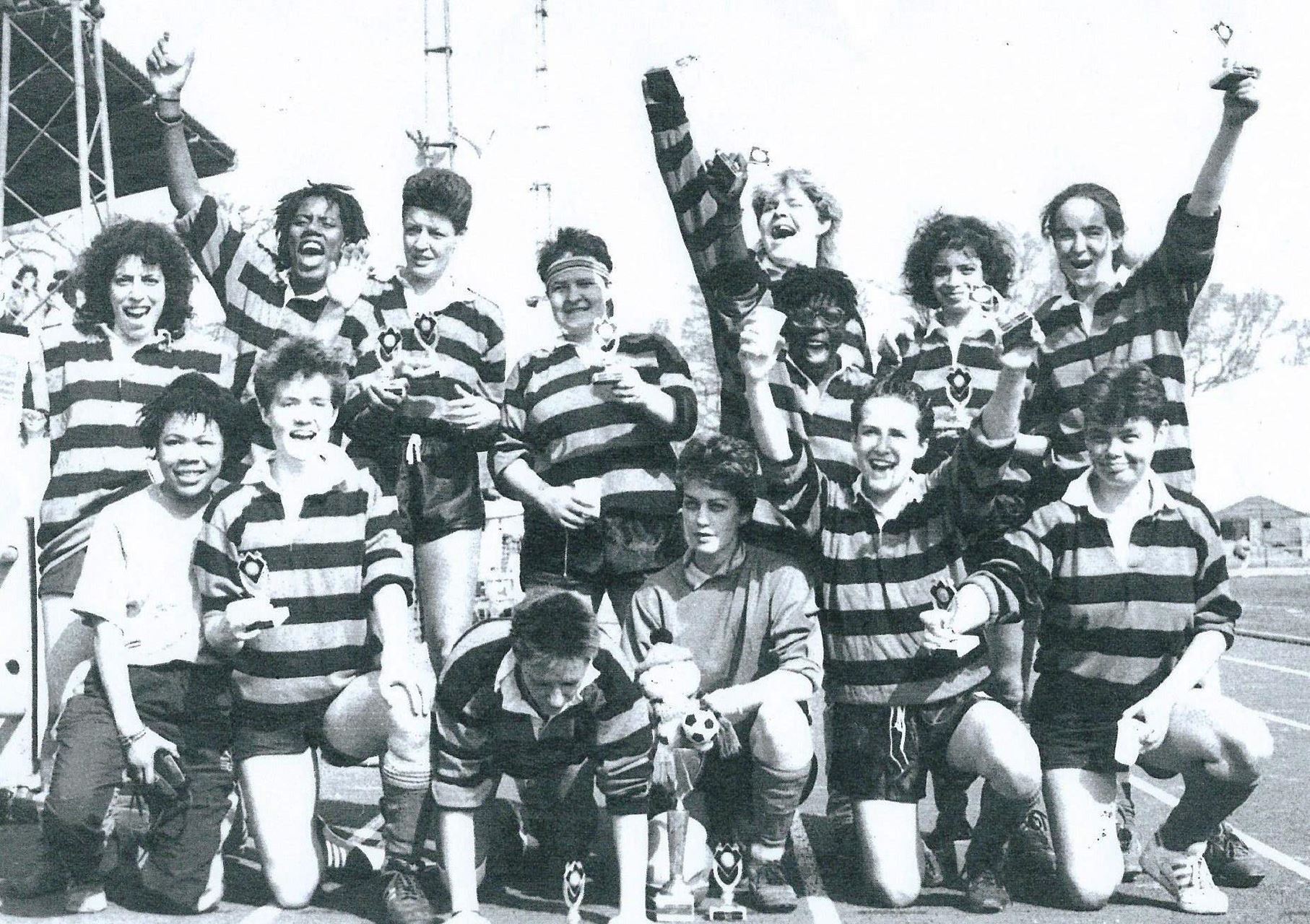

Article about Joanie Evans; Joanie's winning Hackney FC team (Joanie in back row at left): Joanie's medal winning team at GGVI, Sydney 2002
JOANIE EVANS: I was lucky enough to join Hackney Women’s FC, at the same time I came out in 1987. They were already an established team that was predominantly lesbian, they weren’t playing as an ‘out’ team. Due to loads of discrimination around our sexuality from our opposition, their fans and the league, the team held a meeting which subsequently led to us being the 1st ‘Out’ team in Europe… we were pipped to title of the first team in the world, by a few months, by the Flying Bats in Australia.
Playing with this bunch of diverse women, made me feel part of a wider community. In the beginning the team had no real skill, but as a unit we felt we could conquer anything. We played in the third tier of the Greater London League and before we came out we found it difficult to find players, but after me and the team were featured on national TV, our membership grew beyond proportion, with the amount of lesbians that wanted to play for us. Today the team has been going strong for more than 30 yrs and they have 3 teams playing regularly.
* * *
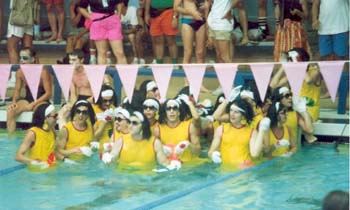
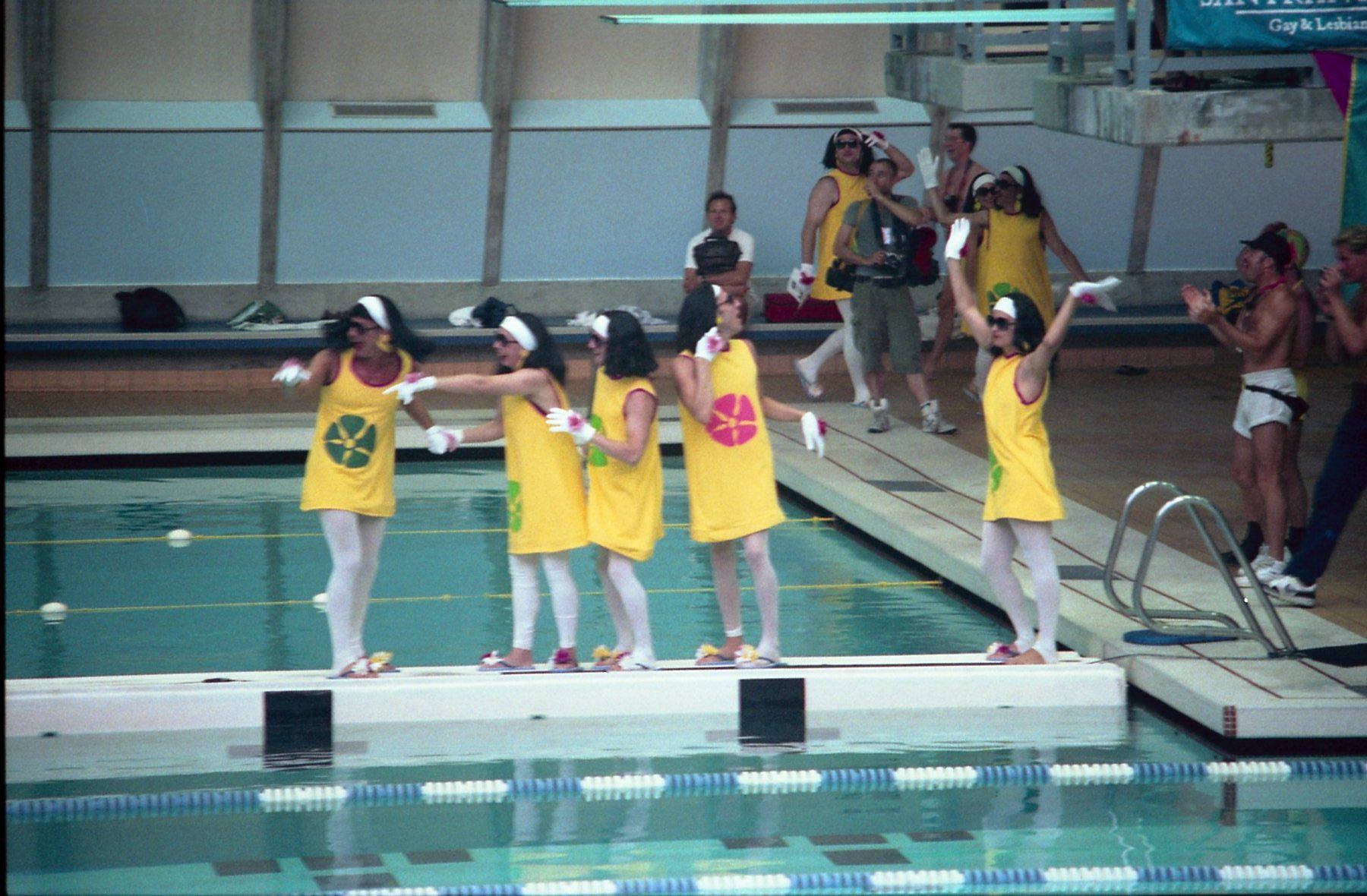
The first Pink Flamingo show - Gay Games III, Vancouver 1990
CHARLIE CARSON: Pink Flamingo
The Pink Flamingo aquatics show – it’s a Gay Games event never envisioned by the 1982 founders, that’s for sure! But now, after three decades, it is a solid tradition – not to mention hilariously fun and hotly contested. In the latest edition, a packed house at Gay Games 10: Paris 2018 saw London’s Out to Swim team take first place.
During the Gay Games’ early years, cross-dressing was enough to be a star on a pool deck in keeping with the LGBTQ+ community’s long history of gender bending transgression. And at the first two Gay Games that’s all it was – a man in a woman’s swimsuit at the swimmer’s party in 1982; a male relay team similarly attired upstaging the other medalists on the awards stand in 1986.
Also in 1986, Vancouver’s English Bay Swim Team added a pink flamingo element at a meet with their Seattle Orca friends. Organizers were inspired to create an exhibition relay race by a Vancouver TV commercial for a home insulation company showing a yard full of pink lawn flamingos. In a 1994 interview before Gay Games IV, English Bay’s John Whistler said, “We wanted to have a fun event to take a little of the competitive edge off.” The only rule was that the swimmers hd to carry the flamingo and hand it off to the next member of the relay team. How each team carried the bird was up to them.
At the first International Gay & Lesbian Aquatics (IGLA) Championships in early 1987, New York swimmers came out before a relay dressed as Lady Liberty – and this time swimming in their lycra gowns in the race itself (never mind that they weren’t even competitive; the fun was the point).
The pink flamingo batons next became a tradition at Seattle’s Northwest Gay & Lesbian Sports Festival beginning that July 1987. Picking up a cue from New York a few months earlier, the teams came out from the locker rooms in various costumes, not all cross-dressed. By this point, the event was called the Pink Flamingo Relay.
When Vancouver hosted IGLA’s 1989 Championships, the hosts made the lawn flamingos into hats with pink ribbons to tie them onto the swimmers’ heads. Costumes were now entrenched as part of the program.
For Vancouver’s Gay Games III, the parade of costumed relay teams was the longest yet, with superheroes, fish and lobsters, mermen, Madonna look-alikes, Carmen Mirandas, and more. But New York upped the ante dramatically, with 40 – not four – 40 identical outfits based on Marlo Thomas’ character in the 1960s sitcom, “That Girl.” Marlos came out not only on the pool deck but down through the spectator stands, and before long some were going off the 10-meter diving tower.
Before the relay race itself, 20 Marlos lined up on each pool end to support their swimming relay teammates and, without advance planning, suddenly hopped into the water, bopping up and down to meet in the middle (and… never mind that they weren’t competitive; the fun was the point). At other sports venues all over town the next day, people asked, “Did you hear what happened at the pool last night?!”
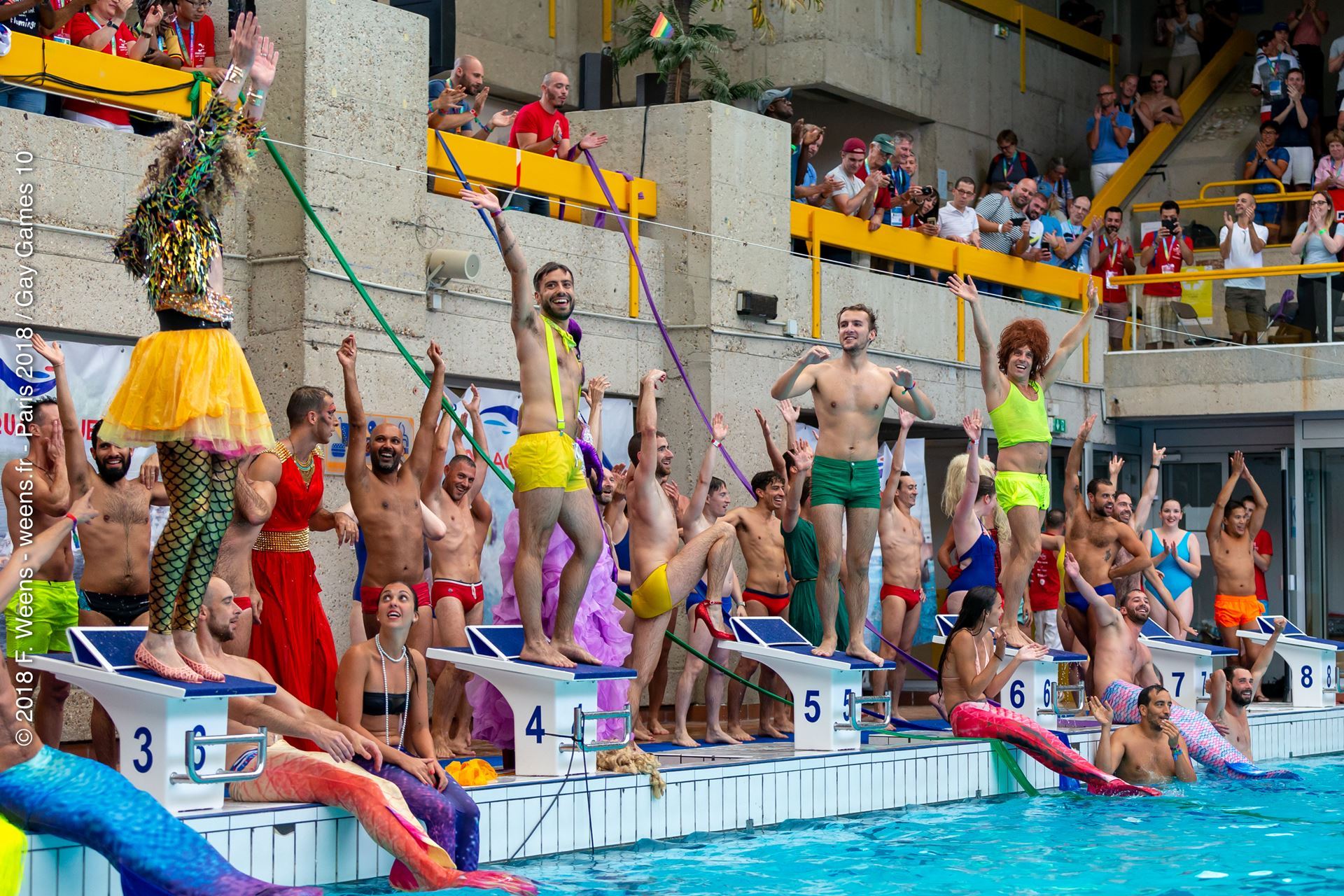

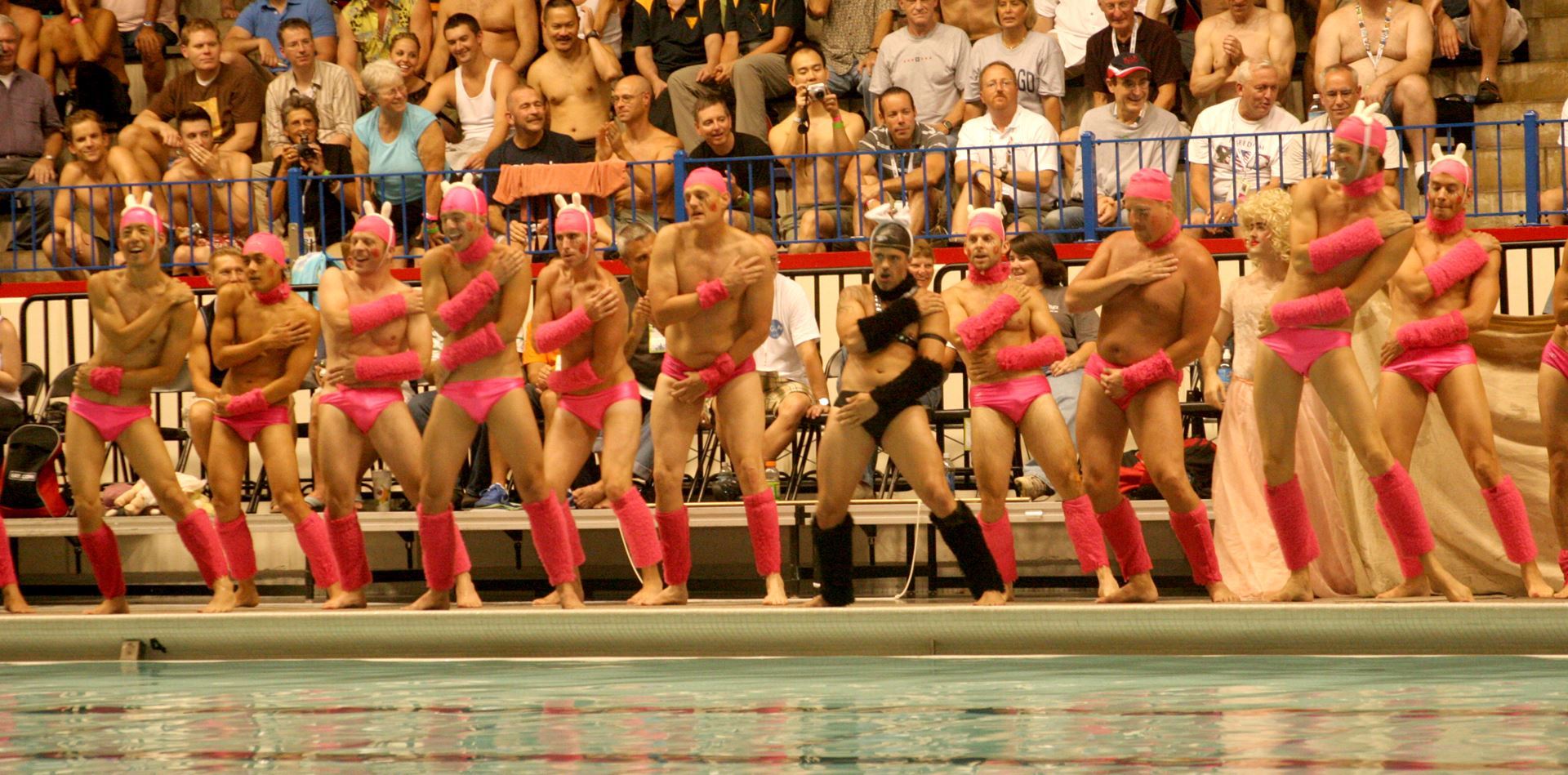
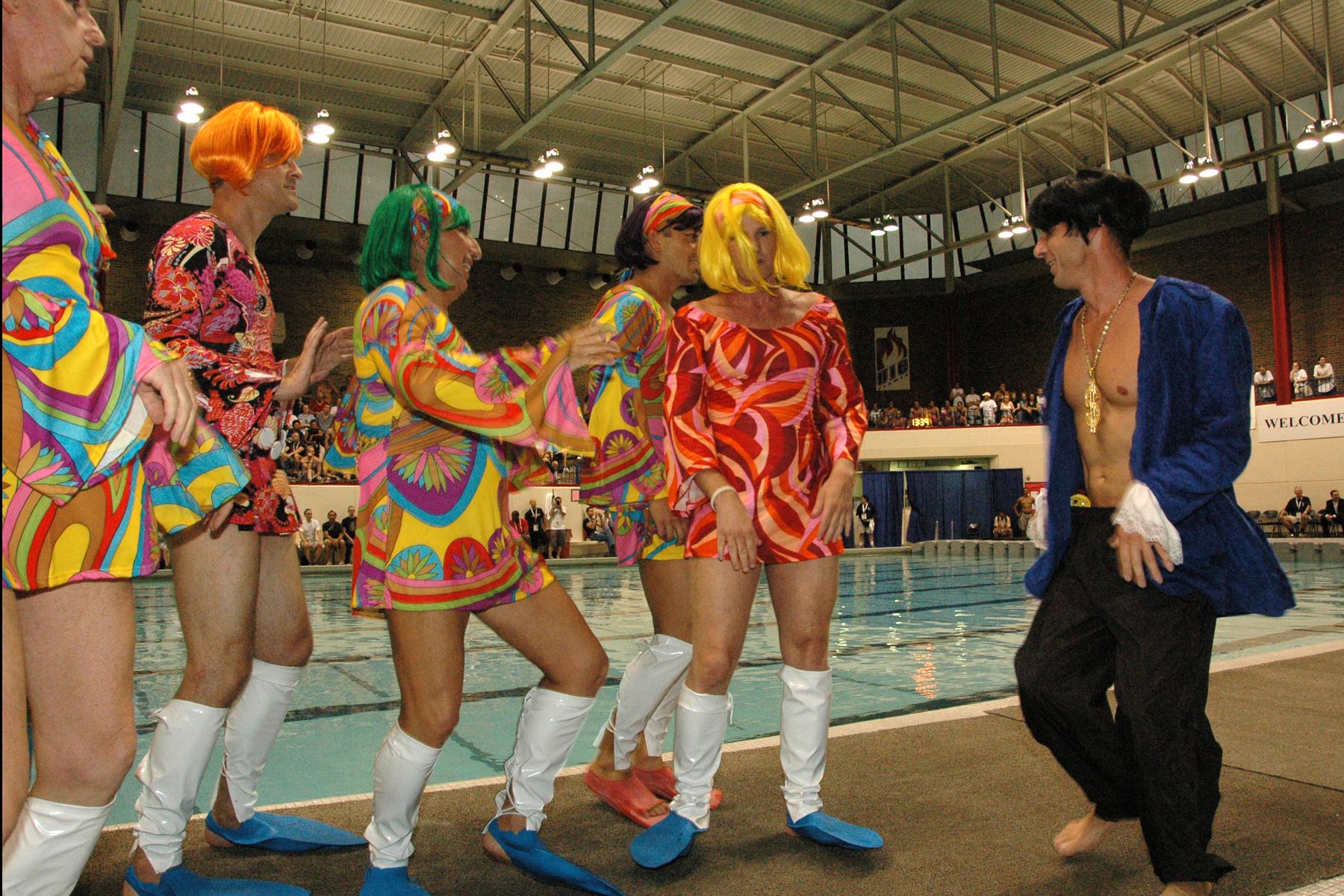

Various Pink Flamingo events at the Gay Games
By 1994 at New York’s Gay Games IV, the costumes weren’t enough – the teams began creating three-to-four-minute skits. And Team New York Aquatics established the rule that the host team would not compete because home advantage meant far more participants would be possible than likely for the traveling teams.
The relay portion – exchanging pink flamingo hats or water bottles or something else – was dropped over the next several years, with the event settling into its current state of skits only. Sydney’s 2002 Gay Games VI had the largest number of teams ever participate – sixteen.
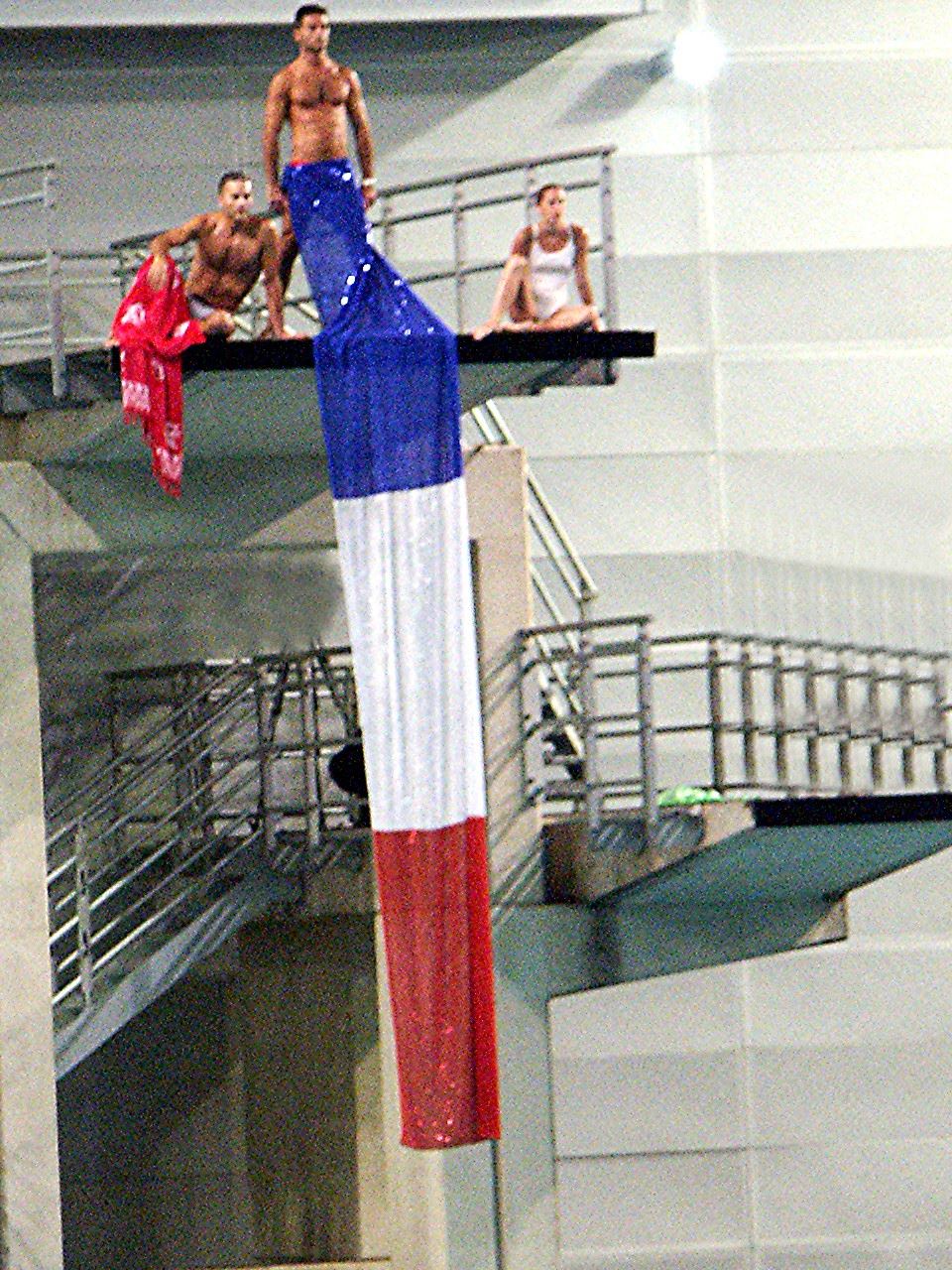
Pink Flamingo, Gay Games VI, Sydney 2002
Local host capacity sometimes limits the number of non-aquatics Gay Games or IGLA participants to the Pink Flamingo, so reserve your place early when tickets are available at future Games.
* * *
Read the entire "Passing The Torch" series as it is posted daily HERE.
